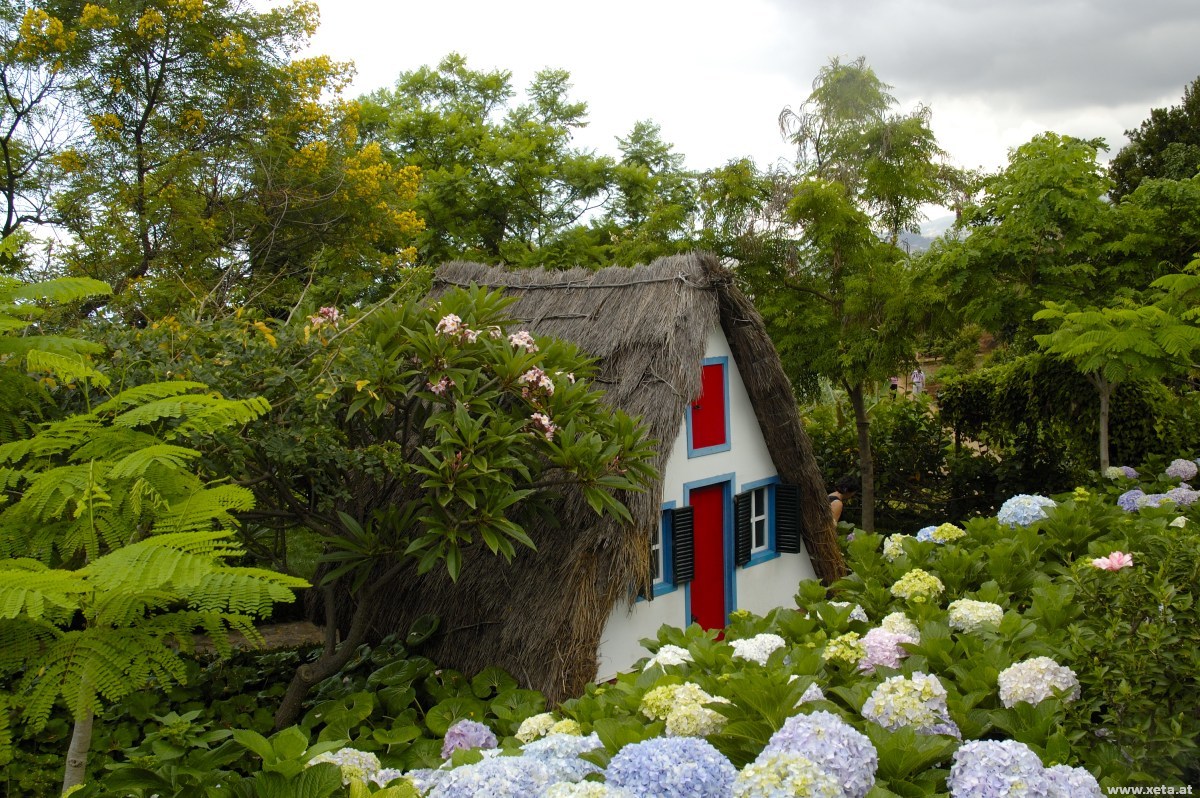CASINHAS

Durante muitos anos inacessível, por mar e terra, a freguesia de Santana conservou características singulares, isentas de influências exteriores. O seu cariz popular acentua-se sobretudo na arquitectura: a Casa de Santana, também conhecidas por "palhaças", são tecnicamente designadas por "Casas de Empena", em forma de V invertido. Normalmente tem dois pisos, um térreo e um outro constituído pelo sótão que possibilita a recriação de uma vivência rural tal como ela se organizava épocas passadas. A casa é constituída por paredes de madeira e coberta de colmo até ao nível do solo. Ao lado da casa do colmo existia a cozinha com baixas paredes de pedra e igualmente coberta de colmo. Aqui ficava o forno, para confeccionar o pão e o tear, onde a tecedeira aproveitava a luz e o calor da lareira para tecer. Por fim existia uma casinha de madeira (retrete) utilizada com casa-de-banho.
A adopção desta matéria-prima deve-se ao facto de, em Santana, haver pouca pedra rija e ao clima frio no Inverno. Assim, as casa adaptam.se às estações do ano, sendo frescas no Verão e quentes no Inverno.


For many years, inaccessible by sea or land, the land, the parish of Santana conserved many unique characteristics, free from outside influence. Its popular aspect, is particulary emphasized on its architecture: the Santana House, also know as "palhaças", are technically designated as "gable houses", in the form of an inverted V, it normally has two floors, one ground floor and the other as an attic. The Santana House is a re-creation of the rural way of living, just as it was in time past. The Santana House was made with wooden walls, covered in straw till ground level. Next to the thatched house there was a kitchen, with low walls stone walls and a thatched roof. The oven for baking bread would be found in the kitchen, along with the loom, where the weaver would make the most of the light and warmth to weave, and finally, a small wooden shack, which was used as a toilet.
The use of these prime materials is due to the fact that Santana had little hard stone and the cold climate of winter. This way, the houses adapt to the different seassons of the year, being warm in winter and cool in summer.